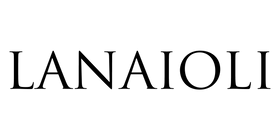The cashmere (English name of the fiber) or cachemire (name given in France to the same fiber) is a precious natural textile fiber made from the hair of the Capra Hircus.
Its name derives from the historical region of Kashmir, currently divided among the states of India, Pakistan, and China, from where Cashmere fiber was exported to Europe since the early 1800s.

Who are the main producers of Cashmere fiber?
The species in the wild state has a range that includes various regions such as Asia Minor, the Caucasus, Turkestan, Iran, Beluchistan, Pakistan, and India. It is estimated that around 104 million Cashmere goats are raised worldwide, of which 75 million are in China alone.
Wild populations, introduced by humans, also exist in Europe on some islands of the central-eastern Mediterranean, such as Crete.
Some populations of domestic goats, which have relatively recently returned to the wild state, are present in some European countries such as Great Britain, and in Italy they are found on the island of Montecristo and the island of Caprera, as well as some small farms managed in various parts of Italy from Tuscany to the Alps. There are also farms in North America and Australia.
The combing of the undercoat: this is how Cashmere is collected from the Goat
The feel of cashmere is soft, silky, and velvety, giving a warm and fluffy sensation. The finest and thinnest part is the undercoat fluff called duvet, which is the soft and woolly lower layer; the coarser part with stiff and rough hairs comes from the outer coat and is called giarre.
To collect the precious fiber that will then be transformed into a textile yarn, a manual combing of the undercoat is performed during the molting season, typically at the end of winter and beginning of spring.
How much Cashmere is produced worldwide?
It is estimated that the average annual world production of Cashmere is around 5 million Kg, and China is the world's leading producer (from 60% to 90% of world production depending on seasonal trends), followed by Mongolia, Afghanistan, Iran, India, Pakistan.
What are the main countries that transform Cashmere fiber into clothing?
Although fiber production takes place almost entirely in Asia, the European continent imports 80% of the production, and Italy alone accounts for 60% of the world import to supply the Fashion supply chain, an excellence of local productions, as also appeared in the article Italia Regno del Cashmere” back in 2011. The United Kingdom is the second largest European importer with a share around 12% of the total.
Is Italy the Kingdom of Cashmere?
Italy is the main European country for the processing of cashmere, not only in the manufacture of finished knitwear products but also for spinning activities.
In the Piedmont areas of Biella and Valsesia are located the most important companies in the world that work this fiber with a complete production cycle: from the selection of the cashmere lock (the best is recognized by the length of the fibers) to the transformation into yarn and then into fabric.
Thanks to the purity of the streams found in these areas and the chemical-physical characteristics of their waters, it is possible to work the cashmere obtaining an absolute softness, hardly reproducible elsewhere.
It is no coincidence that Lanaioli manages to combine artisanal skills and a Made in Italy tradition to tell its brand and the Cashmere products made in our country.

Why is Cashmere so precious and expensive?
Production averages between 100 and 200 grams of fine hair per adult animal, decidedly modest quantities, which make this fiber, besides being extremely thin, also so rare and expensive.
Moreover, to make a sweater, since the Cashmere yarn is very thin, a length of about 6.5 km of yarn is needed, typically provided by the production of 3 Hircus Goats.
What is the finest Cashmere?
The finest cashmere is the “Two Ply,” the two-ply twisted yarn. The thinner the fibers, 14-15 microns, the more sought after and naturally precious and expensive they are. The difference between 13 microns and 13.5 microns in terms of cost can be evaluated in thousands of euros.
Naturally, these are significant prices, but there are lower grades that can guarantee products of excellent craftsmanship and more accessible in terms of cost, while maintaining the quality and comfort of this precious natural yarn.
What are the most requested and most expensive Cashmere colors?
The most requested and most expensive color is white. Followed by grey (light grey) and reddish-brown (light brown, dark brown, red and fawn).
How can you always keep a Cashmere garment beautiful?
After purchasing yarns and manufacturing garments Made in Italy, known for their mastery in knitting, it is important to take care of these precious and exclusive garments. With the right care, they can last for many years.
It is important to keep cashmere garments safe from moths by placing dedicated products in wardrobes and drawers. Garments should be washed carefully in cold water (at most lukewarm) and strictly by hand, using natural soaps. We provide some tips to always keep your cashmere sweater beautiful and make it last forever inside our blog.
Pure Virgin Cashmere or Regenerated Cashmere, what are the differences?
As we wrote in our article on the topic of the differences between Virgin Cashmere and Regenerated Cashmere, these are essentially in the production methods of the fiber. The fiber of pure Cashmere comes from the undercoat of the Capra Hircus and is then processed through carding, spinning, and manufacturing in knitting workshops. The regenerated cashmere is obtained by recovering and selecting waste fabrics or garments to transform them into regenerated yarns.

The material is manually sorted to remove impurities that are not 100% cashmere. It is then shredded into small pieces to obtain a cashmere veil through carding before being twisted into new yarns.
The result of Regenerated Cashmere is a product that has the full dignity of a Cashmere product. The advantage is that it comes from a sustainable and eco-compatible supply chain and for this reason it may feel or look different to the touch compared to Virgin Cashmere.







